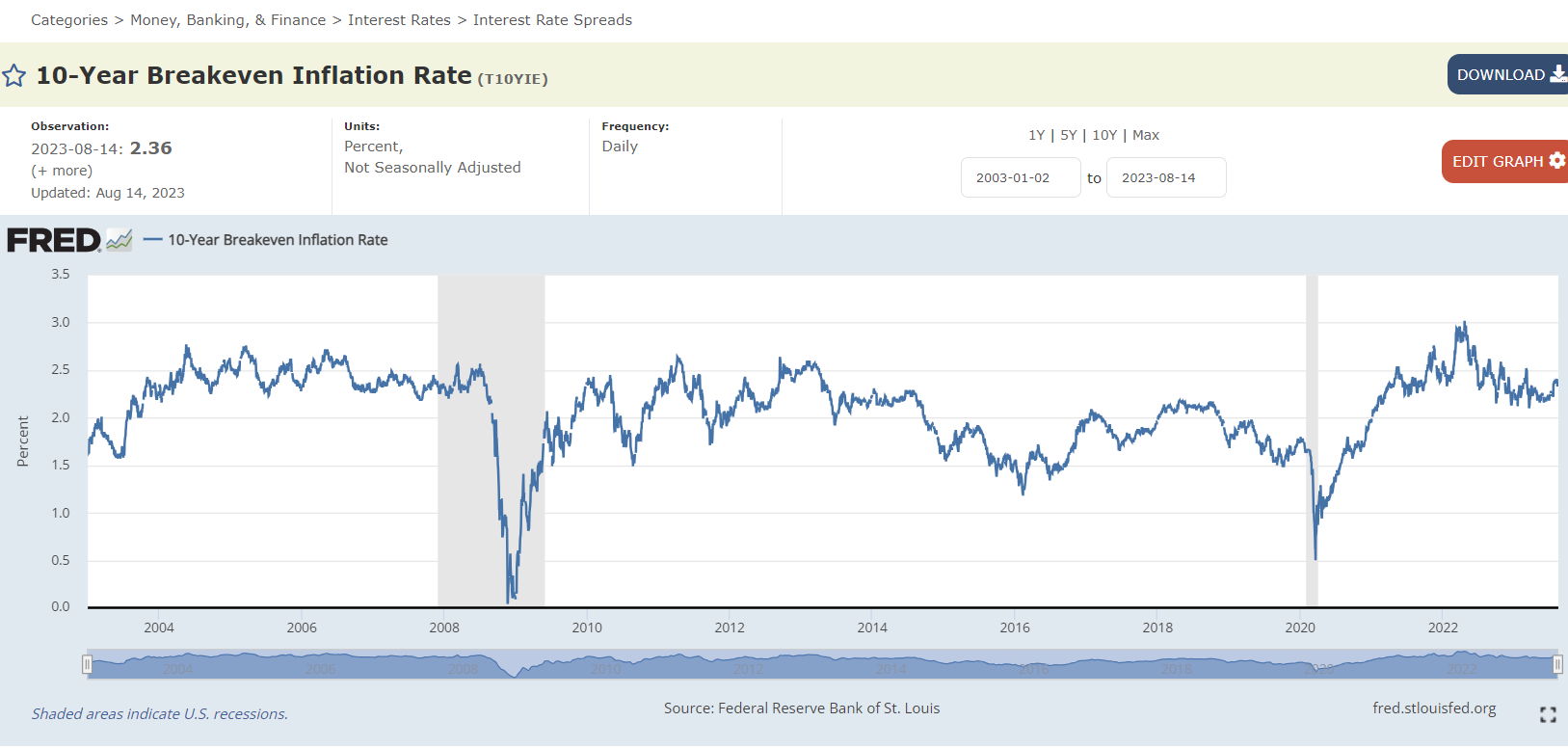Inflation Rate Predictions: Analyzing the 10-Year Breakeven Rate


If you have gambled on sports or even just filled a March Madness bracket, gaining insights into the uncertainties of life, including the unpredictability of future events, is inevitable. Among the areas riddled with uncertainty, predicting economic trends stands out prominently. The concept of inflation rate predictions plays a pivotal role here.
The future tends to be murky, and what makes sense from a historical track record may or may not materialize. What they say in most financial documents – “Past performance is not indicative of the future,” is entirely accurate in most aspects of life.
So if most people need to improve at making predictions, then there must be experts with knowledge and experience in the matter that do much better. On average, experts are slightly better than non-experts, but not by a significant margin.
The example here is Warren Buffett. Over his glorious 40+ year career in finance, Mr. Buffett has returned on average 12% annual return to his shareholders while S&P500 has returned 9% annually. When learning this fact, most people misunderstand how significant that is. Indeed, they have heard of a money manager that made 100% or even 500% in one year.
Expertise vs. reality: unveiling the wisdom of the crowd
Surprisingly, as far as we know, some managers make substantially more than Mr. Buffett’s 12% a year, just those managers usually lose money subsequently. On average, over at least 20 years, no money manager has returned more than Mr. Buffett to their clients. It is hard to believe, but beating the market is very difficult. Moreover, in the long run, beating the market by a wide margin consistently is impossible. One of the inherent characteristics of the Future is that it is essentially unknowable.
So, what are we to do if the Future is mainly unknowable? Surprisingly, even if the Future is unknowable, a large and diverse group of experts are, on average, the best predictor for the Future. We call this large and diverse group of experts “the wisdom of the crowd.”
Wisdom of the crowd: insights from sports betting
The wisdom of the crowd is very easily visible in sports betting. At the end of the NFL season, if one tallies all the game-closing lines, one will see that 50% of the time, the results beat the line, and 50% of the time, they failed. Yes, NFL betting lines, especially closing betting lines, are, on average, the best predictor for any NFL game, so much so that any person that consistently beats them is invariably cheating.
Regrettably, many of the stories you have about famous and successful gamblers are just fairy tales – they either engaged in fixing games or made most of their income by being bookies.
Reevaluating paradigms and inflation rate predictions
We say this because we constantly read how the world has entered a new “paradigm.” Inflation is here to stay, and plenty of “experts” are here to assist you in making financial decisions for the Future.
So, why don’t we look at inflation’s “betting lines”? And there is one – even a few.
Let’s take a look at the 10-year breakeven inflation rate:

Understanding the 10-year breakeven inflation rate
First, what is the 10-year breakeven inflation rate? The 10-year breakeven inflation rate is an expected rate of inflation that is extrapolated from Treasury Inflation Notes (TIPs) such that you will make money if inflation is higher than the breakeven rate. As our readers can see, the present level of 2.36% annual inflation per year for the next ten years is very much in line with the average historical inflation. Yes, it is higher than what inflation was from 2015 to 2020, but not that different from the inflation levels from 2010 to 2015.
It is hard to believe that after experiencing nearly 10% inflation in 2022, “the wisdom of the crowd” expects inflation, on average, in the next ten years to be 2.36% annually. But that is what the markets are implying. Those numbers are not indicative; they are tradable. Most readers might be interested in hedging their inflation fears, but ten years is a long time.
Luckily, there is a 5-year breakeven inflation rate:
![Federal Reserve Bank of St. Louis, 5-Year Breakeven Inflation Rate [T5YIE], retrieved from FRED, Federal Reserve Bank of St. Louis; https://fred.stlouisfed.org/series/T5YIE, August 16, 2023.](https://alaricsecurities.com/wp-content/uploads/2023/08/BRK.5.YR_.png)
Remarkably, it looks very similar to the 10-year breakeven inflation rate. The inflation rate is slightly lower than previously estimated. It is predicted to be 2.29% annually for the next five years. We can facilitate this trade as well.
Market wisdom prevails
In summary, despite the confidence of ESPN’s experts in NFL game predictions, betting lines generally outshine individual pundits. When it comes to inflation rate predictions, the market reigns supreme.
In particular, the Treasury Inflation Notes (TIPs) market has proven far more accurate than any expert could hope to be. The market says that the future will look remarkably similar to the past. We certainly do not expect any “new paradigm regimes” or “sea of changes” to occur.
Based on the current trends, the market says that the Future will look remarkably similar to the past. We certainly do not expect any “new paradigm regimes” or “sea of changes” to occur.
The persistence of status quo
It is hard to believe, but the status quo is usually the favorite to remain. Most New Year’s resolutions usually fail.
The best and the worst-case scenarios typically don’t happen, and tomorrow usually looks just like today.
On average, it takes half a lifetime to realize how true that is.
